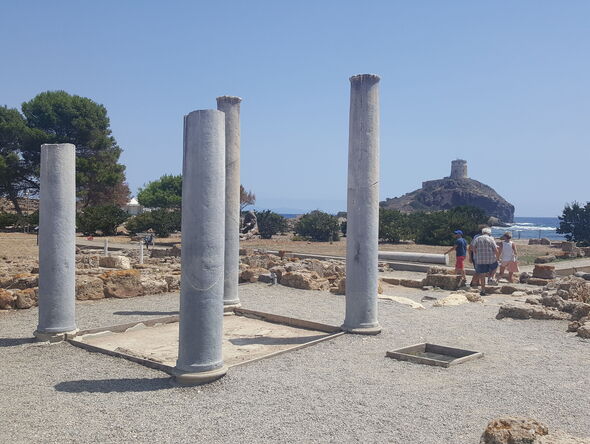This archaeological site was one of the most important cities in ancient times, keeping a central role in the Mediterranean.
This city of Nuragic origins – which arose in the early Bronze Age in approximately 18th Century BC – has been inhabited by several populations, each contributing to make it incredibly unique.
Several teams of archaeologists have been working on excavations and studying the city since the late 19th Century.
Located inside the Pula Archaeological Park, Nora is located in southern Sardinia, just a few miles from Cagliari, the capital of the island. It was incredibly hot when I visited in August, at almost 40C, but the mosaic tiles and pillars I witnessed made it worth it.
Situated right by the sea and partially submerged, it was first discovered when a storm surge uncovered some of its ancient cemetery.
Nora was the crucial exchange point for merchants wanting to sell their goods to Sardina, and was well-known by people at the time.
The most important relic, now in the Cagliari National Archaeological Museum, is the Stele di Nora, a stone tablet written in an alphabet similar to the Phoenician-Punic language. It is the most ancient written document in all of western civilisation, from the 8th-century BC and was the first with the name Sardinia – Shrdn – written on it.
On the hill in the middle of the site, the Tanit Temple can be seen, though little remains of this religious building other than what is believed to be a 56-centimetre tall, pyramid-shaped altar. The original Tophet cemetery, an area devoted to the Punic Gods Tanit and Baal, can be admired. This is where the Stele of Nora was found.
Several Roman streets and public buildings can be found, including the Forum, which acted as the heart of Roman politics. The aqueduct complex was essential to the private houses as well as to the public places, including the thermal baths. There is also an amphitheatre which has yet to be fully excavated.
The theatre remains the only one on the island and is incredibly well preserved, with it still being used for concerts in the summer months. It is thought that during the Roman era, it could house up to 1,200 people.
My favourite part, however, was the extensive mosaic floors, which have been incredibly well-preserved.
After the Punic Wars (264-146 BC), Romans began to colonise Punic cities, including Nora. From the fifth-century BC, Nora began to flourish and during the Imperial era had around 8,000 inhabitants.
However, the city began to decline around 500AC and was completely abandoned in the eighth-century as a result of barbarian and pirate attacks. The rising sea levels also contributed to its abandonment. The Bithia site, also in southern Sardinia, suffered the same fate and is now almost completely submerged.
Nora is also of great importance to the Sardinians for its connection with St. Efisio’s story, the most beloved saint of the island. It is said that around the end of the third century AD, the saint was beheaded by Roman soldiers on the beach in front of the city. Every 1st May the procession dedicated to the saint leaves Cagliari, on a 20-mile pilgrimage ending at Nora, which, it argues, is one of the longest processions in Europe.
Nora Archaeological Site can be accessed most easily by car. From Cagliari, it takes about 40 minutes, or alternatively you can get a bus to nearby Pula and walk the 30 minutes to the site.
Clearly, I was not the only one left mesmerised by the site. Visitors on Tripadvisor said: “What a great archeological site. There was so much more than expected; the ruins are impressive and I loved the numerous mosaics.”
